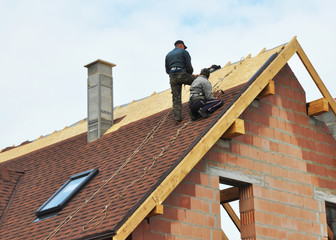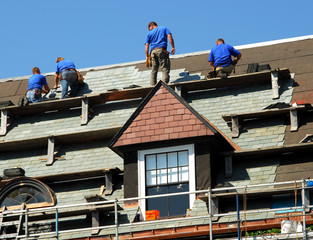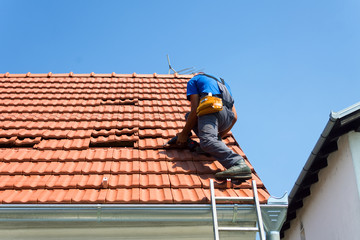The roof of your home is what protects everything inside it. That’s why having a reliable roofing company that can help with emergencies is important.

Most, if not all, residential roofing contractors offer an emergency service line. So when your roof experiences damage from severe weather, fire, or a sudden leak, you can call Roofing Companies immediately.
Whether you own a commercial building or a private home, your roof is integral to your property. It protects your valuables and keeps water, sand and other elements out of your home. It is, therefore, important to regularly maintain your roofing system. In addition to performing regular inspections and routine maintenance, you should also have a plan for emergency situations that may arise.
A well-thought-out emergency roofing response plan can help you avoid a lot of trouble, including costly repairs and structural damage. Having a plan for dealing with these problems can help you minimize the amount of downtime that your business or household experiences and ensure that operations can continue without disruption.
There are a number of weather-related issues that can cause damage to your roof and require an immediate response. These include storm damage, shingles missing from your roof, and falling tree limbs. In most cases, you will need to call an emergency roofing company when these problems occur.
In general, any type of damage that can affect the structure of your house is considered an emergency situation. This includes leaks from a damaged roof, and holes in your roof that allow light or water to penetrate the interior of your home. In some cases, you may need to cover the hole in your roof with a tarp until it can be repaired by an emergency roof repair service.
It is important to remember that your roof is one of the first lines of defense against harsh elements that don’t belong in your house, such as wind, rain and snow. Your roof is subject to a variety of damaging events that can compromise its integrity, from lightning strikes and hailstorms to fallen tree limbs and rodent infestations.
It’s important to stay calm when you discover roof damage. Your first instinct may be to climb up a ladder to see the problem, but this is not advisable and can be dangerous. If you notice any shingle damage, this is a sign that the roof needs to be fixed immediately and could lead to more serious problems down the road. You should also check your attic for signs of water leaks, which are another indicator that you need to act quickly to fix the problem.
While there are many issues that may affect your roof, severe storms usually cause the most damage and are the main reason for emergency roofing. If you live in an area that is prone to severe weather, you should always be on the lookout for signs of damage from high winds, heavy rains and flying debris.
While many homeowners will attempt to fix their own roof problems after a severe storm, it is important to call in professional help as soon as possible. The sooner you can get your roof fixed, the less likely it will leak and cause other structural damage to your home.
A severe storm is considered severe by the National Weather Service if it produces hail larger than three-quarters of an inch and/or wind speeds of at least 58 miles per hour. This type of severe storm can do significant damage to your roof and cause serious property loss, including flooding, if left untreated.
Hailstorms often result in shingle damage, while high winds can lift shingles and even tear them off of the roof. Strong winds also have the potential to knock down or rip off tree branches, which could fall onto your roof. Additionally, if your roof is old or poorly maintained, you can experience more severe damage from wind and rain than you would otherwise.
The first step in any storm-related roof repair is to have a professional examine the damage and provide an estimate for the cost of the emergency repairs. In some cases, you might need to file an insurance claim if the damage is severe enough.
It goes without saying that climbing on your roof during a severe storm is dangerous and should never be attempted by anyone but an experienced professional roofer. If you decide to tarp your roof yourself, you should make sure you use the proper materials and follow all safety guidelines. Additionally, you should not climb on your roof in bad weather if it is still windy or raining, as this could lead to falling or getting hurt. If you find yourself in a situation where your roof is in immediate danger, it is best to evacuate the house and take shelter in a central room of the first floor or basement until professional help can arrive.
Trees can fall during storms or simply due to age. In either case, they can be devastating for a roof and the home beneath it.
If a tree falls on your home, or even just threatens to, you must evacuate your family immediately and seek shelter elsewhere. This is because the weight and structural damage from a fallen tree can cause parts of your house to collapse, and it could also take down power lines which poses a threat of electrocution.
After everyone has made it to safety, the next step is to call emergency services and a tree service company. Do not try to handle the tree or tarp your home yourself, as this is dangerous and puts you at risk of injury. It’s also best to stay out of your home until emergency services have arrived and the power has been restored, as you never know what other damages may have occurred.
Oftentimes, tree branches fall on a roof and leave puncture holes in the shingles. This makes the shingles vulnerable to the elements, causing leaks and more damage. These holes must be sealed as soon as possible to prevent further damage and prevent any potential health issues from water intrusion.
It’s important to trim trees regularly. This can keep them from becoming a danger during storms and prevent the need for emergency roofing. It’s also a good idea to cut down any dead or dying trees on your property as quickly as you can. However, it’s important to check with local city bylaws and arborists before removing a tree, as some species are protected and cannot be cut down without permission.
You should also make sure that you have a plan for when a storm hits your area. This should include designating a safe shelter in the event of a storm, such as a basement or cellar and practicing it with your family so that everyone knows where to go. It’s a good idea to stock the shelter with first aid kits, water, food and blankets, as well as the phone numbers for your gas and electric providers so that you can report outages or downed powerlines when necessary.
If your gutters are clogged, there is no way for water and debris that flows off your roof to make its way down into your home or away from the structure. This means that the materials may seep into your home and cause costly damage.
Periodically, check your gutters to ensure that they are free from clogging. If they are clogged, you can easily fix this issue by trimming nearby trees and removing dead branches. Additionally, regularly clean your gutters of leaves, pine needles, tennis balls, and even that Frisbee you lost a few years back.
However, gutters can also become clogged with ice dams in the winter. These blockages occur when the water and ice in your gutter freeze together and then melt when the temperature starts to warm up again. These clogs can lead to flooding and more water leaks in your home.
Emergency roofing often involves replacing or repairing shingles that have been damaged or torn off by wind, rain, hail, or other environmental factors. These issues can affect the integrity of your entire roof and should be addressed immediately. It is essential to hire an experienced roofer for any major repairs or replacements of your shingles.
A clogged gutter gives the water that pours off your roof nowhere to go, causing it to build up on your roof and possibly rotting the material. Water can also seep through your ceiling or walls and into your attic, which is very damaging to the interior of your home.
Standing water and clogged gutters are also attractive to insects, especially mosquitoes. They can breed in these areas, causing an infestation that is difficult to get rid of.
Another problem caused by clogged gutters is foundation damage. When water is not properly vacated from your roof, it can seep into your basement or the foundation of your house and cause costly structural damages. This can lead to cracks in your basement walls, mold growth, and sagging foundations.




